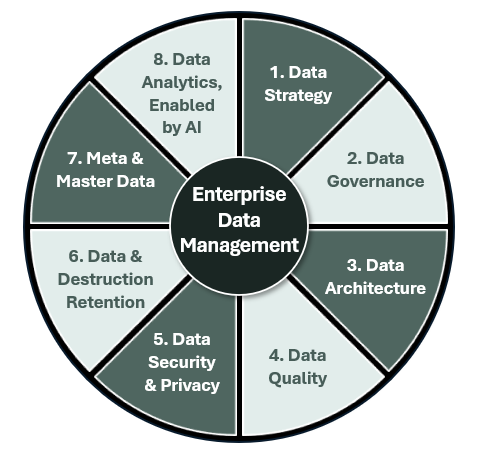In the complex and highly regulated financial services environment, the cost of poor data management is staggering, estimated to cost businesses billions annually in operational inefficiencies, regulatory fines, and missed opportunities. Yet, amidst these challenges lies an unprecedented opportunity. Data, when meticulously managed and effectively leveraged, has emerged as one of a company's most valuable assets. Indeed, organizations that effectively harness their data consistently report stronger financial outcomes and greater market agility, enabling improvements in revenue, reduction in costs, and mitigation of risks. The transformative potential of artificial intelligence (AI) hinges entirely on the quality and accessibility of this data, making robust data asset management a foundational imperative. For instance, financial institutions implementing predictive analytics solutions have reported an average return on investment (ROI) of 250-500% within the first year of deployment.[1] Achieving this is difficult, as many financial services organizations struggle to fully harness the full potential of data, facing a myriad of challenges that prevent them from transforming raw data into actionable insights and a true competitive advantage.
The Strategic Imperative of Data
Data represents more than just information; it is a critical resource that can drive significant business outcomes. For financial services firms, a data-first approach directly supports the pursuit of increased revenue, reduced costs, and minimized risks, leading to improved product offerings, personalized customer experiences, and streamlined operations.
Specifically, the strategic value of data manifests in several key areas:
The Data Dilemma: Common Challenges in Financial Services
Despite the clear benefits outlined above, realizing this value is often hindered by common challenges, which are mitigated with a strong data management program. Financial services companies inherently deal with vast volumes of data in many disparate systems and applications. Adding to this complexity, this data is often highly sensitive and may require extensive protection controls and subject to diverse regulatory requirements.
Foundational Elements of a Data Management Program
To successfully navigate these prevalent challenges and effectively meet growing regulatory demands, a robust assessment of your current data management program is essential. Key areas to evaluate include:

- Data Strategy: Is a clear strategy defined, communicated, implemented, and aligned with overall company objectives?
- Data Governance: Are roles, responsibilities, policies, and standards specified and implemented? Is there sufficient executive engagement and resourcing?
- Data Architecture: Is the underlying data infrastructure designed to support current and future data needs effectively?
- Data Quality: Are standards, processes, and measures in place, with ongoing assessments and corrective actions to improve quality?
- Data Security and Privacy: Are capabilities sufficient to prevent unauthorized access and ensure compliance with privacy regulations?
- Data Retention and Destruction: Are there clear policies and technology-enabled processes, along with a comprehensive data inventory and classification by risk?
- Meta and Master Data: Are master data and metadata defined, governed, and actively managed to ensure consistency, accuracy, and usability across the enterprise?
- Data Analytics, Enabled by AI: Are analytics requirements understood, and is the process for data sourcing, conformance, and integration reliable and efficient? Are results actionable, and are both structured and unstructured data leveraged? Is the organization equipped with the necessary technology, data, and expertise to effectively develop, deploy, and derive value from AI solutions?
Notes:
[1] 8 Real-World Stats on the Application of Predictive Analytics for Finance